 "Let me return to my old primary school, St Joseph's convent [in Cloncurry]. Saint Mary McKillop, I'm sure, was just like my principal, Sister Thomas..." Bob Katter's book, while retrieving some good Australian ideas and paying its respects to our ancestors, also markets big population ideas uncannily like those of B.A. Santamaria.
"Let me return to my old primary school, St Joseph's convent [in Cloncurry]. Saint Mary McKillop, I'm sure, was just like my principal, Sister Thomas..." Bob Katter's book, while retrieving some good Australian ideas and paying its respects to our ancestors, also markets big population ideas uncannily like those of B.A. Santamaria.
Bob Katter An Incredible Race of People Murdoch Books, September 13, 2012.
Down the rabbit hole
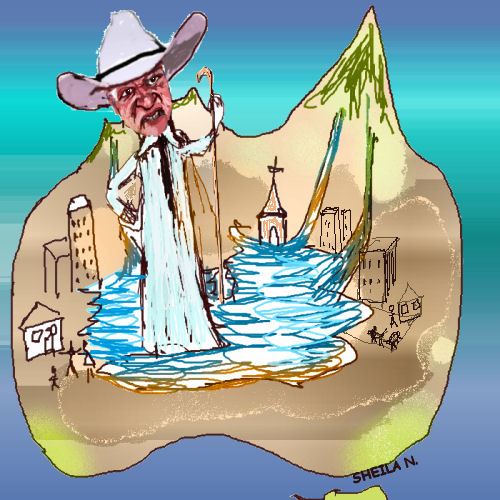
Hurrying through a mall in outer Brisbane, a few weeks ago a book by outback Queensland independent politician, Bob Katter Jr., caught my eye amongst the fat-foodie and ‘life-changing’ array in the bookshop. It was strangely alluring like the rabbit hole for Alice.
A friend and I found it so fascinating in its chronicle from a particular point of view of Australian political and economic history that we bought two copies; one for kindle and the other a hardback, so that we could compare notes.
Even so, this book review was very hard to write. Katter’s book reflects a long lifetime of quirky political observations and experience in a head-long rush of a narrative, opinion and anecdote. It is a long and detailed book. Even if you disagree with every word, it is hard to dislike the enthusiasm and overt individuality, so rare in an Australian politician.
Surprisingly, I found it easiest to start by comparing Katter’s book with professional journalist Laura Tingle’s article, “Great Expectations”, in Quarterly Essay recently. See [See "Tingle shoots blanks ..."]
Tingle dumbfounds in her strangely arrogant and unempathic painting of Australian convicts as wimps and whiners, and the Australian population as curiously dependent, whereas Katter writes warmly of an 'incredible race of people' who came from the "convict crucible".
Katter performs an educational service in telling of all the things that Australians managed to create and do with a population of only about 7 million - proportionately more than we now achieve in manufacture. But he seems not to realise the contradiction between his acknowledgement of how well we achieved and what we created at 7 million and his current perception that we now need a much bigger population. In fact, in his last two chapters, he puts on the growth spurs and urges for a population of 55 million by ... wait for it... 2037! That's in 24 years. One generation. An immigration invasion, no less.
Katter is a self-confessed 'developmentalist'. He admires 'doers' and despises ‘pygmyism’ [what he perceives as the opposite of developmentalism]. His whole book is a hymn to engineering, peasant farming, empire building and … did I say? … population growth.
The son of a Cloncurry Labor Party secretary, Katter seems to be a B.A. Santamariarist (a Grouper) at heart in his desire to irrigate the Australian desert and settle tens of millions of peasant farmers there. You wonder why and, in the very last chapter, you realise that he is the product of a Catholic education and the associated ideology about civilization as a moral imperative, medical science as having saved us from an eternal struggle against pestilence and disease, without which one in four would not survive birth, [1] and that population growth is normal or good. Despite all his lauding of the 'first Australians', he is a fan of the 'civilising' influence of the Conquistador.
"Let me return to my old primary school, St Joseph's convent [in Cloncurry]. Saint Mary McKillop, I'm sure, was just like my principal, Sister Thomas..."
Katter's values shape the things he chooses as important in history. It makes sense to compare Katter with Tingle because both use quite different interpretations of the same events to kick off opposite ideologies. Tingle uses the history of politicians selling off our institutions to argue that we can no longer expect anything of governments. Katter uses a different interpretation of the same thing to argue for the election of his party of 'doers' to bring back those lost empowering institutions - like a Peoples' Bank, patriotic Australian employers, Australian manufacturing and design, and an owner–operator society, in which men sell their labour or their produce through collectively owned ‘means of production’, or at least through statutory collective marketing arrangements.[2] Many Australians would welcome these among Katter’s policies.
Tingle mentions how Australia has been subject to constant mass immigration. She then glaringly omits to comment on this. Katter can hardly stop talking about it. He wants more, more, MORE!
Most Australians don’t want a bigger population.

Katter’s dream
What is to underpin Katter's vision of turning of rivers inland and the flooding of the interior with water to create an inland sea for a hugely swollen population? Katter believes that almost limitless coal resources underlie about 20 per cent of Queensland. In fact he believes that Australia has the most coal of any country in the world. (Usually Australia is placed around third in coal reserves globally). He actually believes that Australia can be a great power just on these, with 'clean coal technology' [3] and ethanol from sugar cane. These energy sources combined with massive irrigation throughout much of Australia, for Katter would enable a host of peasant farms across northern Australia, to feed the world and power Australian industry and huge new cities in the north and south, plus our current cities ballooned to megapolises.
Creating an inland sea, if you added trees (which Katter does not mention) might affect climate positively, although this is an old idea which has been criticized as unlikely to do what it purports, and of a scale so financially costly that no government has ever gone further than look at the idea and hastily discard it.[4] If our population stayed the same, in theory such a scheme might help our current environmental problems, however, Katter simply wants to use it to add to our problems by turbo-charging immigration. So we would have massive increased energy costs associated with a vast engineering scheme, plus all the additional costs of the new population. Katter, however, only assesses things in terms of a credit side to an imaginary financial balance sheet. He just doesn’t get that the financial balance sheet depends on the health of the environment and that we are already overpopulated. Or, maybe he does get it but he knows that he is more likely to get coverage in the mainstream press and funding if he makes an appeal to the big populationists of corporate Australia.
Population and scale
Katter believes that big populations carry ‘economies of scale’. He seems not to have heard about the diseconomies of scale we are all experiencing with congestion in Australian cities. Nor does he seem to notice the loss of democratic representation as our representatives preside at a great altitude over more and more vast electorates in a materialistic hierarchy antithetical to the Australian egalitarianism that Katter also extols. His answer to our overlarge population’s overshoot of Australia’s water supply is to turn the northern rivers inland. Katter is the kind of man who cannot acknowledge limits. (In this he is no different from nearly every Australian politician).
He thinks that Australia can return to farming and manufacturing and inventing with
"[...] an extra 100,000 migrants a year [...adding] to the current immigration mix of 250,000 a year, giving us a population by 2037 that would be in line with most countries: around 55 million."
Yet he began his book saying how much we manufactured with only 7 million people. He also notes how successive economic liberalization policies put Australian business out of business and promoted international corporations. It seems to me that, if we changed our anti [small and medium] -business laws, our enterprise would again flourish, probably better without the constant pressure on land and resources prices of a bigger population.
He does not explain how he arrives at a definition of 'most countries' nor why we would aim to be of a particular [big] size. If you look up countries with populations over 30m but less than 100m you get: Philippines, Vietnam, Germany, Ethiopia, Egypt, Iran, Turkey, Congo Democratic Republic, France, Thailand, United Kingdom, Italy, Myanmar, South Korea, South Africa, Spain, Ukraine, Colombia, Tanzania, Argentina, Kenya, Sudan, Poland, Algeria, Canada, Uganda, and Morocco. The list of countries with much smaller populations than that is much longer and includes Switzerland, Sweden, Israel, Hong Kong, Singapore, Denmark, Ireland, Finland, New Zealand, Norway, Taiwan, Australia, Syria, Romania, Netherlands, Greece, Belgium, Portugal, Czech Republic, Hungary, Iraq, Venezuela, Malaysia, Saudi Arabia, and more...
Hydraulic engineering
In his barracking for a huge population for Australia, Katter is also calling for increased irrigation and the canalization of Australia's waterways on an unprecedented scale. He completely ignores wild ecology, animal rights, and the right of people to have wilderness. He celebrates as worthwhile the activities of engineering, road building, dam building, and irrigation channel building above all.
He is like a man in the grip of an ecstatic vision driving at 200 kpm down a highway in the middle of the night without any lights on, with no brakes and no insurance. In this he seems to be exactly like nearly every other politician in the country – except that he remains interested in primary products.
"Our mining product, our beef and our ethanol would be carried out on great canals fanning in from Spencer Gulf and south from [...] Two per cent of northern Asutralia's land and just 7 per cent of its water, combined with 10 per cent of Australia's grain [...] a real, open and sensible migration system. It will be unlike our current migration system that chokes off people [...] Some of this new population and much of the old will have moved out of rabbit-warren cities and onto their own one to three [...] A population of that size will provide great prosperity and great economies of scale. [...] All of northern Australia will become 'the land of 10,000 billabongs', with wildlife and nature no longer struggling [...]
Catholic education negates sensitivity to nature?
Note that this last statement is the only one that sounds even faintly kindly towards our natural environment. My impression was that Katter's catholic education probably taught him to block nature out, in the belief that endless human expansion was our manifest destiny. For Katter, science is not about understanding and cooperating with our wonderful natural world; it is about dominating it and subduing it. And that means dominating and subduing local senses of place and local empowerment with massive engineering projects and mass immigration, for all his talk about democracy.
Whilst one can understand his position as a representative for farming influencing his perception of engineering rivers and dams, he actually seems to be irrigation and production- mad, to the extent that there can never be enough! For this reason (as well as the extraordinary financial and engineering costs and poor chances of success), one cannot endorse his wish to revive the Bradfield Scheme to water Australia's inland deserts, leaving the rest of Australia trashed and going forth to multiply and trash the rest.
(For a dissection of the Bradfield scheme and its paroxysmal resurgence from time to time in Australia, see, Dr Robert Wooding, "Populate, parch and panic: two centuries of dreaming about nation-building in inland Australia," Chapter 6 of John Butcher (Ed.), Australia under construction : nation-building : past, present and future, ANU School of Government, 2008.] [For a discussion of the Australian tendency to big huge and costly projects of little real benefit, see, Dr Richard Evans' "A passion for white elephants: some lessons from Australia’s experience of nation building" in Chapter 5 of John Butcher (Ed.), Australia under construction : nation-building : past, present and future, ANU School of Government, 2008.)
Aboriginal Land and Water
For Katter, private property is the key to civilisation. Unfortunately he is unable to see that modern economics in Australia also has a downside in its zero-sum capitalisation of land.
Convinced of the British capitalist system as the way forward, Katter thinks that Aboriginal land should be alienable - that is, that Aborigines should be able to buy and sell their community land - principally in order to borrow from banks so as to start businesses.
"It should appear obvious to any objective social commentator or historian that the often portrayed ugly picture of ‘Aboriginal’ Australia would be exactly the same picture in every town, village and city in the rest of Australia if the inhabitants were suddenly bereft of the private ownership of land and realty, and all that land and realty was suddenly to belong to the so-called ‘community’." (Jnr, Bob Katter (2012-05-15). An Incredible Race of People (Kindle Locations 714-716). Murdoch Books Australia. Kindle Edition.)
He is right, of course, as far as his philosophy goes, but it doesn’t go very far. The problem is that all that privately-owned land and realty is exponentially gravitating to fewer and fewer hands because of our 'wonderful' land-tenure system, so that the majority of Australians are becoming increasingly land and capital poor and endebted. What is the point in turning Aboriginal land into this economic quicksand?
Equity is preserved far better in the European roman law or Napoleonic system, but Katter, like most Anglophone politicians does not know of this alternative system that almost every country in Europe uses. (Pity, because he might like French dirigism and he might learn something from a system that counts population growth as costs to the community.) Aboriginal land as the founding institution of their 60,000 year old society has a much better record than a 300 year old capitalism that is cannibalising its own people and their property. Try taking Maori land away! No-one would dare to suggest that as a good idea.
Katter damns the Queensland Labor Government for reversing attempts to privatise Aboriginal land. Basically he believes in 'progress' as an evolutionary and divinely inspired constant. He does not seem to appreciate (and it does not seem to occur to him) that the Australian Aboriginal way of life retains its intrinsic validity, any more than he seems to appreciate the intrinsic validity (or value) of nature itself without the imprint of industrial man. Even though he describes gallantly the stand that the Australian Aborigines made against the British invasion, one can see that he feels it is all in the past, in a time unredeemed by Progress, Catholicism, mining and irrigation.
He also cannot stand to see all that water in the north under native title.
Ethanol and Carbon Emissions
Inspired by the Brazilian ethanol industry, Katter promotes the idea that carbon emissions will be taken care of by the production of ethanol from sugar cane, which can be substituted for petroleum. The next sugar cane crop will reabsorb the carbon emissions, he believes. Although he is a rural politician, he has a strange disregard for soil.
The main problem with the production of biofuels from crops is the overuse of soil, which is biologically alive. The constituent soil organisms cannot survive frequent mechanical disturbance and applications of rich fertilizers, which is what is required for the production of monocrops. Another problem is the great amount of water necessary to grow the crops and create the fuel. Use of diesel fuel for mechanical operations, especially at farm level, detracts from the ultimate net energy production and from the ultimate net CO2 production. (It is true that the latter would be zero if it were not for the use of fossil fuels in production.)
Brazilian scientists have costed their ethanol industry:
“…the production of 1 liter of ethanol from sugarcane requires approximately 18.4 l of water, 0,07 kg of crude oil equivalent, and 1.52 m2 of annual land use and results in the lost of 1.8 kg of soil due to erosion. These results are impressive, especially when the Brazilian ethanol production, 16 billion of liters in 2006 (Brazil, 2007) is considered. The soil lost is of utmost importance since the ability in growing sugarcane to ethanol production, or any other crop, is directly related to this natural non-renewable resource.” Source: Consuelo L. F. Pereira and Enrique Ortega, 2005. “Sustainability Assessment of Ethanol Production from Sugarcane,” Conference Paper, , http://www.advancesincleanerproduction.net/first/textos%20e%20arquivos/sessoes/4a/1/Consuelo%20Fernandez%20Pereira%20-%20Resumo%20Exp..doc
“Although the popular belief that ethanol systems have no net CO2 emissions, they do have because of direct and indirect oil consumption; this system uses external inputs that demand petroleum in their production: fertilizers, equipments, chemical inputs, infra-structure and so on. Our estimate is that there is a release of 0.29 kg of CO2 per liter of ethanol produced.” Source: Source: Consuelo L. F. Pereira and Enrique Ortega, 2005. “Sustainability Assessment of Ethanol Production from Sugarcane,” Conference Paper,
http://www.advancesincleanerproduction.net/first/textos%20e%20arquivos/sessoes/4a/1/Consuelo%20Fernandez%20Pereira%20-%20Resumo%20Exp..doc
To summarise the above: There is no such thing as a free lunch; the transformation of one energy form to another costs. A lot. We are using giant fossil fuel oil reserves. When they are gone we won’t be able to replace them with anything even remotely so vast. Trying to do so with sugarcane is a wet dream.
Loaves and fishes mentality
Katter expresses religio-economic beliefs in the value of capitalism and a notion of 'progress' similar to those of most parliamentarians today. This makes him argue like an ecological and thermodynamic simpleton about economies of scale with an increased population when we are looking at fossil fuel resource depletion and cannot cope with the pollution and emissions fall-out from what he have already used. Confident as a brave hunter that there will always be something out there to spear, he sounds like too much of a Man to carry a dilly bag or stop to clean up the mess before inviting 35 million more people along to the barbecue.
As a "Developmentalist" much of his economic philosophy is founded on the Keynesian way out of the Great Depression, when, in an age of cheap oil, governments poured money into projects to employ their people to build infrastructure for future manufacture and expansion. Reasonable for that era, but not for ours. The circumstances have changed.
His hero, Ted Theodore, who built the Australian Workers Union up, was Premier of Queensland from 1919 to 1925, a member of the federal House of Representatives from 1927 to 1931, and Federal Treasurer from 1929 to 1930, was a champion of the Keynesian approach, but was not able to get support to implement it, due to a political scandal.
Katter’s opus is peppered with positive delivery of the kinds of statements that give ecologists and enlightened farmers the willies, such as:
"Les Thiess had revolutionised scrub clearing by putting a big cable or chain between two tractors, but the cable would ride up, particularly with brigalow scrub. Joh,[Bjelke Joh Petersen] using a similar method, had added a huge steel ball in the middle of the chain that stopped it from riding up over the scrub." [Kindle Location 3752]
Katter's heroes are typically the object of 'green attacks'. You can see where his solid antipathy to the Greens arises. Their rhetoric attacks the heart of his values.
Even if Katter's big population, big engineering, big irrigation, big roads, big development obsessions etc make you want to run away and hide, they aren't much different from those of the Liberal Party, the Queensland LNCP, or the Labor Party. Furthermore, the Greens do precious little to stop the push for population growth that causes all the big engineering projects and expansion that oppress and destroy nature, biodiversity and democracy. What's different is that Katter's writing is complimentary and sympathetic to most Australians and he pays his dues to those who laid down their lives or toiled to build this colony from its desert beginnings. You sense his fellow feeling and you respect his ancestors because he seems to respect yours.
He has noted and taken to his heart our battles. Often he was there. He is friend to the soldier, the miner, the worker, the disaffected ALP True Believer, the ex-Lib, the strayed CP member, the misunderstood Pauline Hanson party member, the capitalist Aborigine - and the Catholic Church.
I can't be the only Australian to wonder if Katter is for real or if he's just a brilliant politician in his ability to appeal to marginalised Australians in farm, mine, and satellite suburb and anyone who is just sick of the economic rationalist parliamentary babble. It takes more than luck to survive this long by yourself in Australian politics. But then Katter is second in a dynasty of rural politicians, headed by his father. Katter's father had a country store and Katter himself spent some time in mining – which probably accounts for the rigid solidification of his pioneer mentality. He now occasionally buys and sells cattle and mining interests and his wife buys and sells houses which might be worth around 700,000 (according to disclosure of interests for Parliament).
Katter might have written an unusual and interesting book, but I was surprised at the media coverage it got and the coverage of his party, The Australian Party in the mainstream media - including The Australian. In fact I thought that Katter's new salience in Australian politics probably relates to the huge promotion he makes for rapidly expanding the population in Australia, especially for The Australian. The Murdoch press constantly promotes the idea of a bigger population for Australia. Surely Katter’s book cannot have escaped the notice of the desperados in the growth lobby, who one would expect to be queuing up to throw money at him. Surprisingly, he seems not to be able to attract candidates to his Party, which would otherwise present competition to the Stable Population Party Australia candidates in marginal seats. I think many people would front up to join, were it not for his big population policies.
Finally, one cannot help noticing how Katter’s push for a big population for Australia and his Catholicism are, as I mentioned earlier, very reminiscent of B.A.Santamaria’s philosophy which, with the backing of the Pope, caused enormous harm to Australian democracy. The Catholic Church in Australia has a long history of immigrationism and the Vatican is possibly the richest corporation in the world, with a penchant for interfering in politics and economies. For years The Australian employed Santamaria as a journalist. For anyone interested in familiarising themselves with this fascinating era of Australian history, see "Pronatalist Policy in Australia: 1945-2000" On the other hand, I have no evidence that anything like that is going on with Mr Katter.
NOTES
[1] Katter, for instance, believes that one in four people alive today would be dead if it were not for modern medical technology - antibiotics and vaccinations. Like most people he has fallen for the lurid myth that people in simple societies had life expectancies of around 30 years old and that the appallingly low life expectancy of Europeans in early industrialisation was a norm that had existed up until then. This is complete and utter nonsense but it underpins much of the developmentalist dogma of the Catholic Church and capitalist foreign aid. For the real demographic story read Sheila Newman, Demography, Territory and Law: The Rules of Animal and Human Populations, Countershock Press, December 2012.
[2] These are deceased Queensland Premier Ted Theodore’s words, but they also seem to be among Katter’s policies.
[3] A good book to read about a future relying on coal and for an explanation of the concept of clean coal is Barbara Freeze, Coal, a Human History 2004.
[4] Dr Robert Wooding, "Populate, parch and panic: two centuries of dreaming about nation-building in inland Australia," Chapter 6 of John Butcher (Ed.), Australia under construction : nation-building : past, present and future, ANU School of Government, 2008.] [For a discussion of the Australian tendency to big huge and costly projects of little real benefit, see, Dr Richard Evans' "A passion for white elephants: some lessons from Australia’s experience of nation building" in Chapter 5 of John Butcher (Ed.), Australia under construction : nation-building : past, present and future, ANU School of Government, 2008.]
 On Friday 15 February 2013 at approximately 12:30 pm The Rgt. Hon. Lord Mayor of Melbourne Robert Doyle (actually a "stand in") graciously "opened" Doyle's Dunny at the entrance to the Australian Native Garden in Royal Park.
On Friday 15 February 2013 at approximately 12:30 pm The Rgt. Hon. Lord Mayor of Melbourne Robert Doyle (actually a "stand in") graciously "opened" Doyle's Dunny at the entrance to the Australian Native Garden in Royal Park. 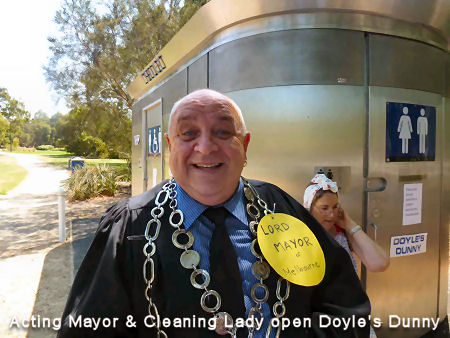 Rod Quantock, Acting President Protectors of Public Lands Victoria Inc. and Deputy Convenor Royal Park Protection Group Inc., served as MC for the occasion and Marg, a cleaning lady, attended the ceremony ready to clean the facility. (See attached photos.)
Rod Quantock, Acting President Protectors of Public Lands Victoria Inc. and Deputy Convenor Royal Park Protection Group Inc., served as MC for the occasion and Marg, a cleaning lady, attended the ceremony ready to clean the facility. (See attached photos.) 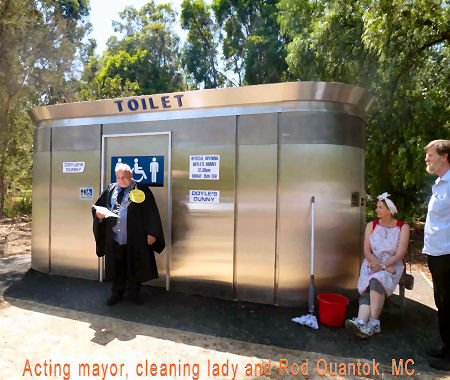 speech are available on request (to me).The Doyle's Dunny opening may be covered on the Melbourne Times Weekly so look out for it next week or the week after. Thanks to all who attended this event and stayed to drink a champagne toast to the Lord Mayor.
speech are available on request (to me).The Doyle's Dunny opening may be covered on the Melbourne Times Weekly so look out for it next week or the week after. Thanks to all who attended this event and stayed to drink a champagne toast to the Lord Mayor.
 Update 24 Feb:HTML Editor dropped. Update 9 Feb 22.00 hrs- Problems for people posting comments will be ironed out soon. 9 February: We finally have an html editor, which makes it much easier for people to write articles. You can format your text in a similar way to using a Word program. Before, our writers had to learn some html or wait for an overworked editor to publish their material. Update 8 February: Something took us off-line... fixed now. Update 7 February 2013 We have decided to return (expect some hiccups still) to the successful Drupal 6 upgrade, pending building more knowledge about Drupal 7. We want to thank
Update 24 Feb:HTML Editor dropped. Update 9 Feb 22.00 hrs- Problems for people posting comments will be ironed out soon. 9 February: We finally have an html editor, which makes it much easier for people to write articles. You can format your text in a similar way to using a Word program. Before, our writers had to learn some html or wait for an overworked editor to publish their material. Update 8 February: Something took us off-line... fixed now. Update 7 February 2013 We have decided to return (expect some hiccups still) to the successful Drupal 6 upgrade, pending building more knowledge about Drupal 7. We want to thank  Candobetter is a huge site. Major upgrades are a big deal technically. They are very complex. We are entering the Unknown.
Candobetter is a huge site. Major upgrades are a big deal technically. They are very complex. We are entering the Unknown. As we understand it, individual States are free to “manage” their own (protected) wildlife. However, the "management" of wildlife ends up evolving into a business of exponential commercial proportions, with momentum to keep supplying the meat and skins for domestic use and international export markets. (Photographs by Brett Clifton)
As we understand it, individual States are free to “manage” their own (protected) wildlife. However, the "management" of wildlife ends up evolving into a business of exponential commercial proportions, with momentum to keep supplying the meat and skins for domestic use and international export markets. (Photographs by Brett Clifton)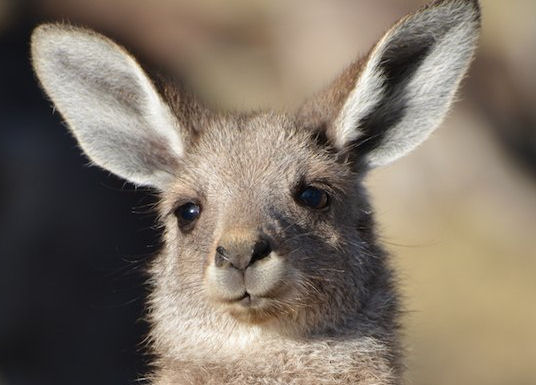 (Photographs by Brett Clifton)[1]
(Photographs by Brett Clifton)[1]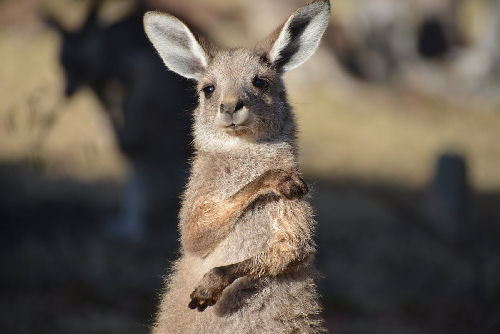



 There is a breeding colony of grey headed flying foxes at Bairnsdale in poplar trees along the bank of the Mitchell River in Bairnsdale. It is now threatened by the East Gippsland Shire. This article, by Bob McDonald, contains a fascinating history of flying fox colonies in early Victoria, as well as some keen scientific observations. (Photos also by Bob McDonald.)
There is a breeding colony of grey headed flying foxes at Bairnsdale in poplar trees along the bank of the Mitchell River in Bairnsdale. It is now threatened by the East Gippsland Shire. This article, by Bob McDonald, contains a fascinating history of flying fox colonies in early Victoria, as well as some keen scientific observations. (Photos also by Bob McDonald.)
 Sustainable Population Australia (SPA) has called on the new Immigration Minister, Brendan O’Connor, to heed the findings of a paper issued yesterday. It found that the number of migrants arriving in Australia since the beginning of 2011 who found jobs about equals the number of new jobs created in Australia for everyone over the same period.
Sustainable Population Australia (SPA) has called on the new Immigration Minister, Brendan O’Connor, to heed the findings of a paper issued yesterday. It found that the number of migrants arriving in Australia since the beginning of 2011 who found jobs about equals the number of new jobs created in Australia for everyone over the same period.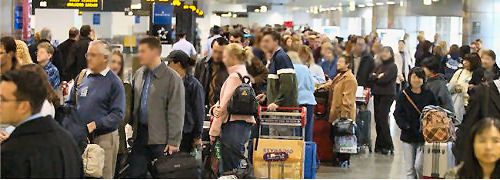 The paper was written by Professor Bob Birrell and Ernest Healy of the Centre for Population and Urban Research (CPUR), Monash University.
The paper was written by Professor Bob Birrell and Ernest Healy of the Centre for Population and Urban Research (CPUR), Monash University.  You are invited to the official opening, the inauguration, of "Doyle's Dunny", a new toilet block at the entrance of the Australian Native Garden in Royal Park, Parkville. Iconic vegetation and indigenous and Melbourne Gardens traditions have been set aside for the siting of this enormous new stainless steel super toilet. The inauguration will be officiated by Rod Quantock Acting President of PPL VIC, as MC. Venue is Gatehouse Street Parkville entrance to Australian Native Garden, Royal Park, at 12:30 pm Friday 15 February 2013.
You are invited to the official opening, the inauguration, of "Doyle's Dunny", a new toilet block at the entrance of the Australian Native Garden in Royal Park, Parkville. Iconic vegetation and indigenous and Melbourne Gardens traditions have been set aside for the siting of this enormous new stainless steel super toilet. The inauguration will be officiated by Rod Quantock Acting President of PPL VIC, as MC. Venue is Gatehouse Street Parkville entrance to Australian Native Garden, Royal Park, at 12:30 pm Friday 15 February 2013.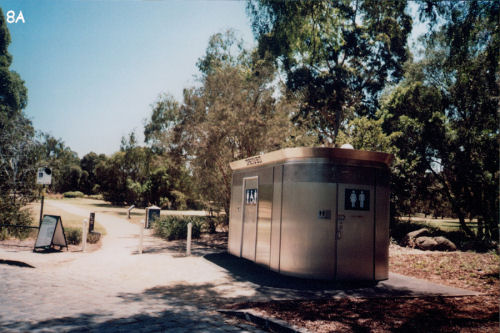 PPL VIC: Official Opening of "Doyle's Dunny" Entrance to the Australian Native Garden Royal Park on Gatehouse Street Parkville at 12:30 pm Friday 15 February 2013 You are invited to the official opening, the inauguration, of "Doyle's Dunny", a new toilet block at the entrance of the Australian Native Garden in Royal Park, Parkville.
PPL VIC: Official Opening of "Doyle's Dunny" Entrance to the Australian Native Garden Royal Park on Gatehouse Street Parkville at 12:30 pm Friday 15 February 2013 You are invited to the official opening, the inauguration, of "Doyle's Dunny", a new toilet block at the entrance of the Australian Native Garden in Royal Park, Parkville. 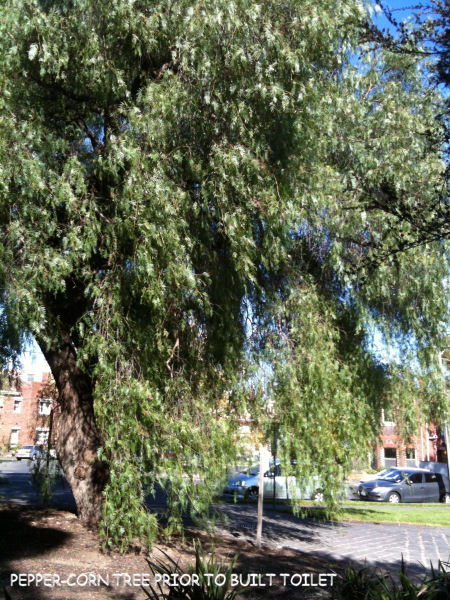 (It is believed this tree was planted by Francis Meaker the first Park Ranger and Bailiff sometime in the late 19 th century.) The Royal Park Master Plan which recommended a stand of lemon scented gums at this entrance of Royal Park, not a toilet block, has been ignored. The Council has a new policy re toilet blocks and has discarded the old cast iron model, painted Brunswick Green to fit in with the heritage streetscapes and Gardens. Instead we have a stainless steel up to date model. Note that the area behind the toilet block has been cleared to stop any "anti social behavior", to use the Council staff's euphemism.
(It is believed this tree was planted by Francis Meaker the first Park Ranger and Bailiff sometime in the late 19 th century.) The Royal Park Master Plan which recommended a stand of lemon scented gums at this entrance of Royal Park, not a toilet block, has been ignored. The Council has a new policy re toilet blocks and has discarded the old cast iron model, painted Brunswick Green to fit in with the heritage streetscapes and Gardens. Instead we have a stainless steel up to date model. Note that the area behind the toilet block has been cleared to stop any "anti social behavior", to use the Council staff's euphemism. 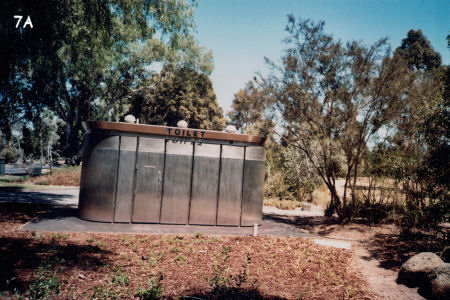 This model and location were apparently given a blessing by the President of the Parkville Association and the Branch Chair of the Australian Garden History Society. Unkind opponents have nicknamed the edifice the "Silver Tomb" and have referred to it as the "biggest blot on the landscape in Melbourne".
This model and location were apparently given a blessing by the President of the Parkville Association and the Branch Chair of the Australian Garden History Society. Unkind opponents have nicknamed the edifice the "Silver Tomb" and have referred to it as the "biggest blot on the landscape in Melbourne".
 As a residents’ group which deals with planning procedures, Malvern East Group (MEG) finds that VCAT fails its own mission statements of being a low cost, accessible, efficient and independent tribunal delivering high quality dispute resolution. The institution of draconian fees now dramatically highlights this disconnect.
As a residents’ group which deals with planning procedures, Malvern East Group (MEG) finds that VCAT fails its own mission statements of being a low cost, accessible, efficient and independent tribunal delivering high quality dispute resolution. The institution of draconian fees now dramatically highlights this disconnect.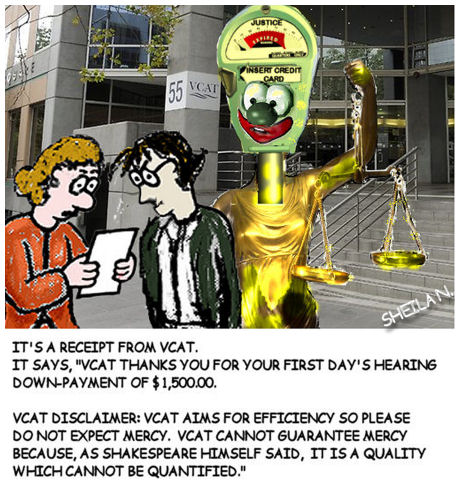
 Here comes an ATV -- second time today
Here comes an ATV -- second time today
 Julianne Bell (Protectors of Public Land Victoria) and Jill Quirk (Sustainable Population Australia (SPA) Victoria and Tasmanian Branches) met with Kelvin Thomson last week for advice on contacting Federal Election candidates regarding population and urban planning. They are very pleased to see that he has been appointed Parliamentary Secretary for Trade.
Julianne Bell (Protectors of Public Land Victoria) and Jill Quirk (Sustainable Population Australia (SPA) Victoria and Tasmanian Branches) met with Kelvin Thomson last week for advice on contacting Federal Election candidates regarding population and urban planning. They are very pleased to see that he has been appointed Parliamentary Secretary for Trade. Another sign of overpopulation and resource competition: We publish a press release from a commercial anti-pirate operation which offers naval escort services across the Gulf of Aden, the Arabian Sea and the Indian Ocean, where easy collection of oil is no longer guaranteed. "In West Africa in the area known as the Gulf of Guinea, where there is no UK, EUNAVFOR or US Naval presence (nor is there planned to be), maritime crime is escalating and is spiralling to such levels that the UN Security Council has recognised it as a specific threat to international security (Resolutions 2018 [2011] and 2039 [2012]). It is estimated that the state of Nigeria is losing $1bn of crude oil through theft every month."
Another sign of overpopulation and resource competition: We publish a press release from a commercial anti-pirate operation which offers naval escort services across the Gulf of Aden, the Arabian Sea and the Indian Ocean, where easy collection of oil is no longer guaranteed. "In West Africa in the area known as the Gulf of Guinea, where there is no UK, EUNAVFOR or US Naval presence (nor is there planned to be), maritime crime is escalating and is spiralling to such levels that the UN Security Council has recognised it as a specific threat to international security (Resolutions 2018 [2011] and 2039 [2012]). It is estimated that the state of Nigeria is losing $1bn of crude oil through theft every month."
 "I am writing to express my serious concerns regarding the proposed VCAT fee increases. I believe these fee increases will unfairly hurt everyday Victorian residents, by undermining access to, in the words of VCAT’s motto, ‘Fair, Efficient Justice for all Victorians’" (Kelvin Thomson MP to the Victorian Attorney General.)
"I am writing to express my serious concerns regarding the proposed VCAT fee increases. I believe these fee increases will unfairly hurt everyday Victorian residents, by undermining access to, in the words of VCAT’s motto, ‘Fair, Efficient Justice for all Victorians’" (Kelvin Thomson MP to the Victorian Attorney General.) 
 VCAT is proposing draconian fees on citizens who wish to protect their property and environment from undemocratic corporate backed development and overpopulation. Fees for a citizen lodging an objection to any development in 2012 were $38.80. For 2013 fees are proposed to rise to $731.80 (for developments costed at less than $1.0m) and to $1,462.30 for developments estimated at $1.0m or more. These fees would increase even more in 2014 respectively to: $869.60 and $1,737.90, and, in 2015, respectively, to $1,007.40 and $2,014.80. Add to this the cost of hiring barristers and this will make a complete mockery of democracy, which is already a laughing stock in Victoria anyway.Submission deadline is 5pm Friday 15 February 2013.
VCAT is proposing draconian fees on citizens who wish to protect their property and environment from undemocratic corporate backed development and overpopulation. Fees for a citizen lodging an objection to any development in 2012 were $38.80. For 2013 fees are proposed to rise to $731.80 (for developments costed at less than $1.0m) and to $1,462.30 for developments estimated at $1.0m or more. These fees would increase even more in 2014 respectively to: $869.60 and $1,737.90, and, in 2015, respectively, to $1,007.40 and $2,014.80. Add to this the cost of hiring barristers and this will make a complete mockery of democracy, which is already a laughing stock in Victoria anyway.Submission deadline is 5pm Friday 15 February 2013.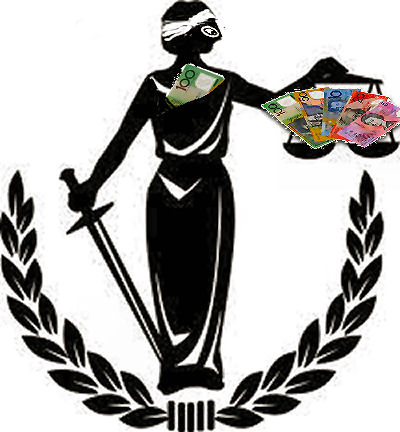
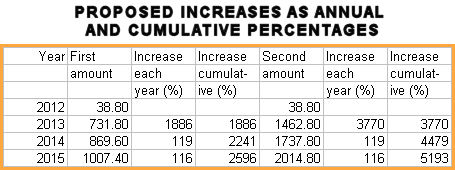
 We wonder if Bob Carr, Australia's Foreign Minister, has any idea of the utter distress he has given to wildlife carers all over Australia in his endorsement of the kangaroo-meat industry for export? It has reduced to despair mature activists who normally soldier on impressively (where the rest of us dare not even look) despite constant exposure to brutality, cruelty and a useless legal system in their daily rounds. Carr's position is even odder in view of his patron status with Voiceless, the vegan fund for animals.
We wonder if Bob Carr, Australia's Foreign Minister, has any idea of the utter distress he has given to wildlife carers all over Australia in his endorsement of the kangaroo-meat industry for export? It has reduced to despair mature activists who normally soldier on impressively (where the rest of us dare not even look) despite constant exposure to brutality, cruelty and a useless legal system in their daily rounds. Carr's position is even odder in view of his patron status with Voiceless, the vegan fund for animals.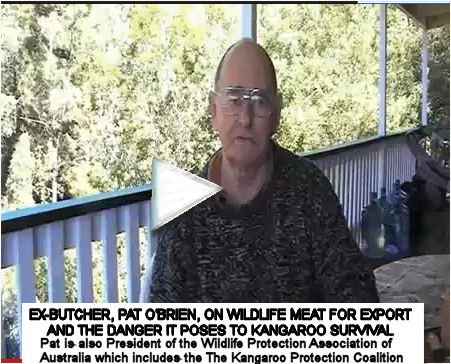
 Source of top half of picture was
Source of top half of picture was 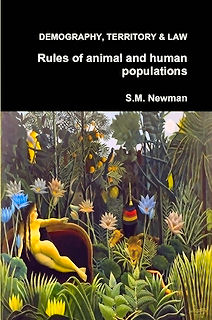
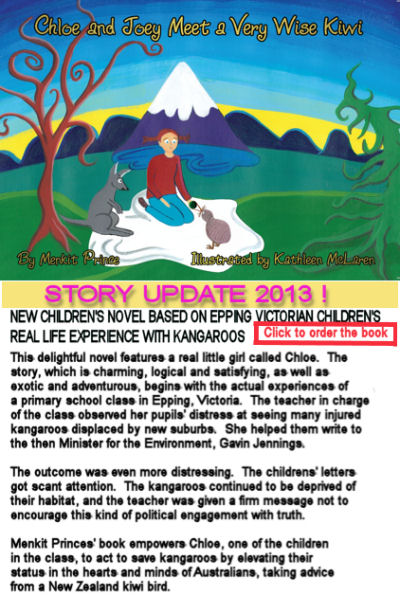
 As one who was involved early on in reporting on the 2008 incident that sparked off this book, and then in some proof-reading, I can personally say that I think this book is a triumph in embodying the goodness of children and their love of nature. This is a book that I will buy for children I know.
As one who was involved early on in reporting on the 2008 incident that sparked off this book, and then in some proof-reading, I can personally say that I think this book is a triumph in embodying the goodness of children and their love of nature. This is a book that I will buy for children I know.


 Amazingly or perhaps, true to type, Australia is experiencing extreme shortages of domestic natural gas supplies. World-wide there is a gas-rush. It also looks like oil is already not keeping up with demand as countries scramble for new more energy costly, polluting and environmentally destructive forms of energy, like tarsands, fracked gas, and sugarcane ethanol. The media is failing to paper over the cracks: Australia looks like a cartoon demonstration of entropy with energy dispersing, the environment overheating, overpopulation and political disorder. And there is nowhere for Australians to escape.
Amazingly or perhaps, true to type, Australia is experiencing extreme shortages of domestic natural gas supplies. World-wide there is a gas-rush. It also looks like oil is already not keeping up with demand as countries scramble for new more energy costly, polluting and environmentally destructive forms of energy, like tarsands, fracked gas, and sugarcane ethanol. The media is failing to paper over the cracks: Australia looks like a cartoon demonstration of entropy with energy dispersing, the environment overheating, overpopulation and political disorder. And there is nowhere for Australians to escape.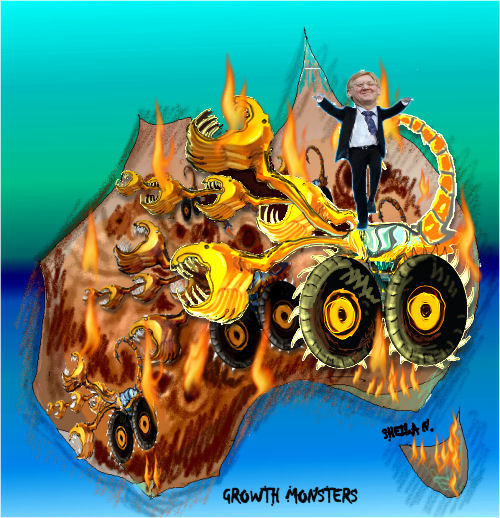
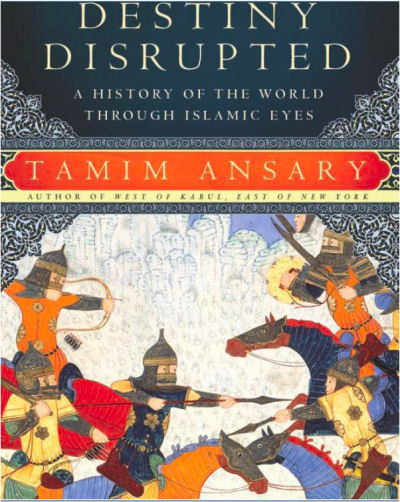
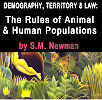 Available in kindle and in print. This book was inspired by 'collapse theory' to look at stable systems in animal and human populations and to define their principles. It introduces a new biological theory of human population numbers, land-ownership and property inheritance. As such it is also about the economic 'fundamentals' of civilisation. Using the concepts of endogamy and exogamy the author points out the persistent importance in world affairs of clans and tribes - be they royal dynasties, family corporations or nation states. Newman shows that in Britain, the United States, Canada and Australia, power, wealth and land are accumulated in fewer and fewer hands by systems that promote disorganisation and displacement of the masses. In contrast, other modern systems in continental Europe and elsewhere, enable families and clans to much better defend citizens' rights and to democratically conserve local land, resources and environment, effectively resisting population growth. This information is not available elsewhere and needs to be widely known. The book is the first of four volumes. SECOND VOLUME NOW OUT:
Available in kindle and in print. This book was inspired by 'collapse theory' to look at stable systems in animal and human populations and to define their principles. It introduces a new biological theory of human population numbers, land-ownership and property inheritance. As such it is also about the economic 'fundamentals' of civilisation. Using the concepts of endogamy and exogamy the author points out the persistent importance in world affairs of clans and tribes - be they royal dynasties, family corporations or nation states. Newman shows that in Britain, the United States, Canada and Australia, power, wealth and land are accumulated in fewer and fewer hands by systems that promote disorganisation and displacement of the masses. In contrast, other modern systems in continental Europe and elsewhere, enable families and clans to much better defend citizens' rights and to democratically conserve local land, resources and environment, effectively resisting population growth. This information is not available elsewhere and needs to be widely known. The book is the first of four volumes. SECOND VOLUME NOW OUT: 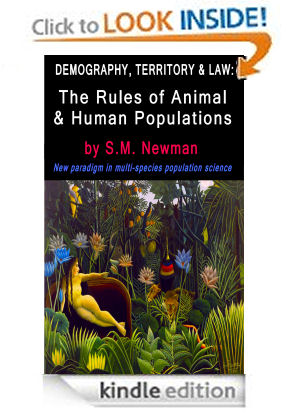
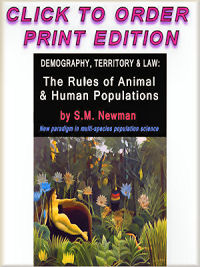
 Our suffering native animals need YOUR HELP during the bushfires. Please send in other contact addresses to add to this list and let us have articles and comments about your experiences helping wildlife in these terrible fires.
Our suffering native animals need YOUR HELP during the bushfires. Please send in other contact addresses to add to this list and let us have articles and comments about your experiences helping wildlife in these terrible fires.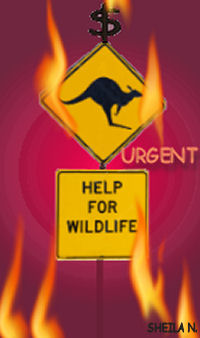
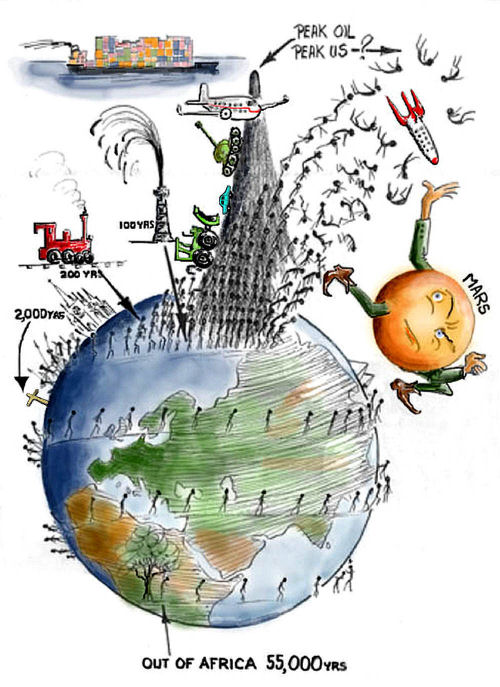

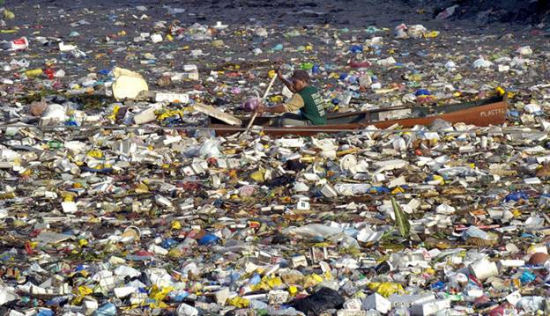
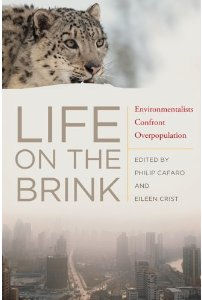
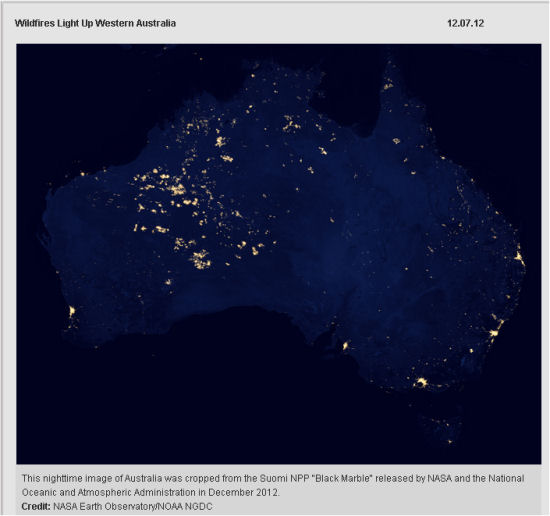

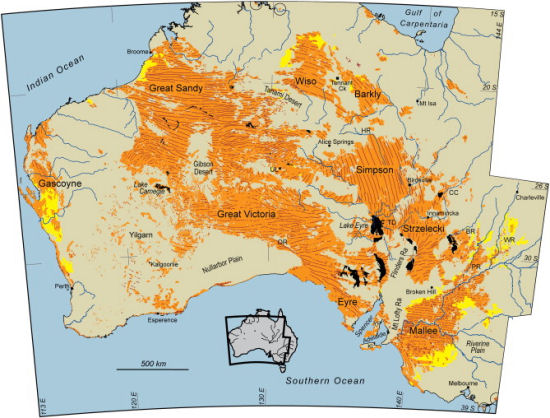 Source of desert map, Paul Hesse, "Sticky dunes in a wet desert: Formation, stabilisation and modification of the Australian desert dunefields," Department of Environment and Geography, Macquarie University, Sydney, New South Wales 2109, Australia. See end of article for abstract quote on dune formation in Australian deserts.
Source of desert map, Paul Hesse, "Sticky dunes in a wet desert: Formation, stabilisation and modification of the Australian desert dunefields," Department of Environment and Geography, Macquarie University, Sydney, New South Wales 2109, Australia. See end of article for abstract quote on dune formation in Australian deserts. "Let me return to my old primary school, St Joseph's convent [in Cloncurry]. Saint Mary McKillop, I'm sure, was just like my principal, Sister Thomas..." Bob Katter's book, while retrieving some good Australian ideas and paying its respects to our ancestors, also markets big population ideas uncannily like those of B.A. Santamaria.
"Let me return to my old primary school, St Joseph's convent [in Cloncurry]. Saint Mary McKillop, I'm sure, was just like my principal, Sister Thomas..." Bob Katter's book, while retrieving some good Australian ideas and paying its respects to our ancestors, also markets big population ideas uncannily like those of B.A. Santamaria.

 For over 200 years Tasmanian wildlife were spared the devastating presence of foxes. A few years ago foxes made it onto the island. Now the effort to stop the irreversible spread of foxes in Tasmania is at a critical stage with many native species at risk of extinction, according to research in the British Ecological Society’s Journal of Applied Ecology.
For over 200 years Tasmanian wildlife were spared the devastating presence of foxes. A few years ago foxes made it onto the island. Now the effort to stop the irreversible spread of foxes in Tasmania is at a critical stage with many native species at risk of extinction, according to research in the British Ecological Society’s Journal of Applied Ecology.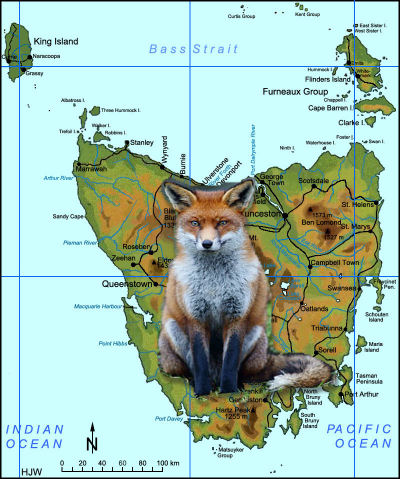
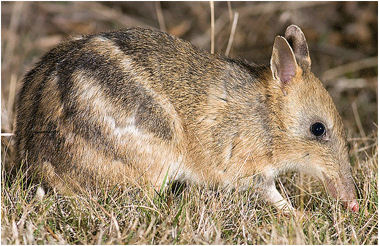 The Eastern Barred Bandicoot (Perameles gunnii) in Tasmania is one of the species at risk from the spread of foxes in the island state.
The Eastern Barred Bandicoot (Perameles gunnii) in Tasmania is one of the species at risk from the spread of foxes in the island state.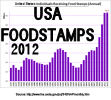 In November 2012 an astonishing 47.7 million Americans were receiving taxpayer funded food stamps but the United States government still imports over 1million immigrants a year - and those are the legal ones.
In November 2012 an astonishing 47.7 million Americans were receiving taxpayer funded food stamps but the United States government still imports over 1million immigrants a year - and those are the legal ones.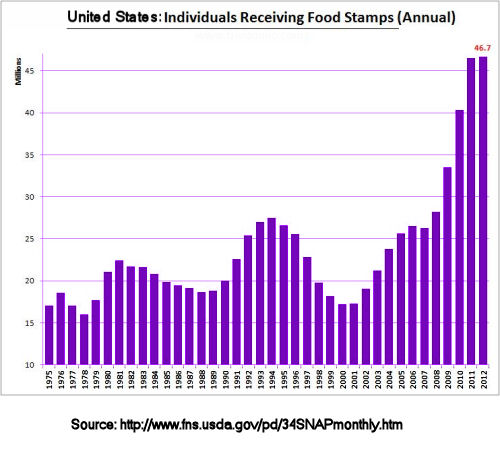

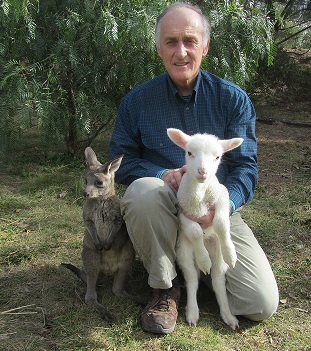


 If I were an aboriginal in West Australia, I would be buying up camels and organizing my clan to develop them as transport, food and materials in a revival of a new style Aboriginal society, which might take in some, but definitely not all, of the refugees from Perth’s collapsing civilization only decades from now. Submissions invited from public on planning doc. (Link inside article)
If I were an aboriginal in West Australia, I would be buying up camels and organizing my clan to develop them as transport, food and materials in a revival of a new style Aboriginal society, which might take in some, but definitely not all, of the refugees from Perth’s collapsing civilization only decades from now. Submissions invited from public on planning doc. (Link inside article) 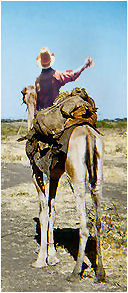 Picture: The future for some Australians?
Picture: The future for some Australians?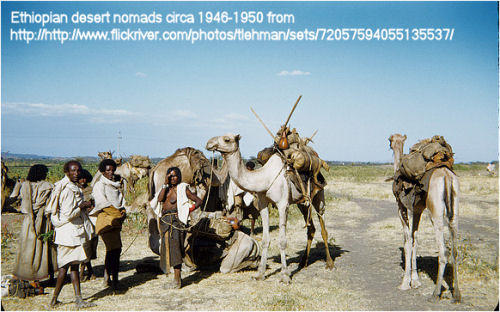

 Twenty thirteen awaits us tomorrow. What is reasonable to expect of the year which some may see as being an unlucky number? Should we reach for the sky or just try to maintain business as usual?
Twenty thirteen awaits us tomorrow. What is reasonable to expect of the year which some may see as being an unlucky number? Should we reach for the sky or just try to maintain business as usual?


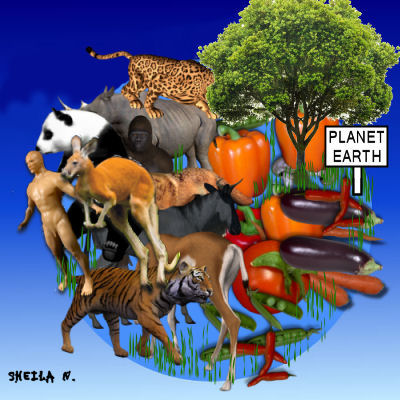
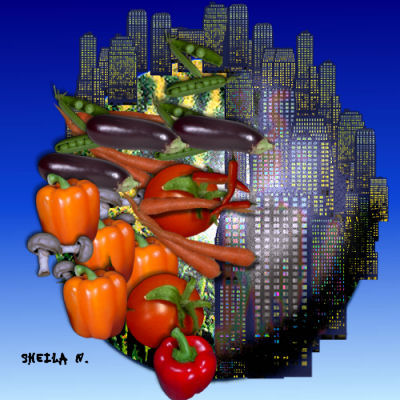
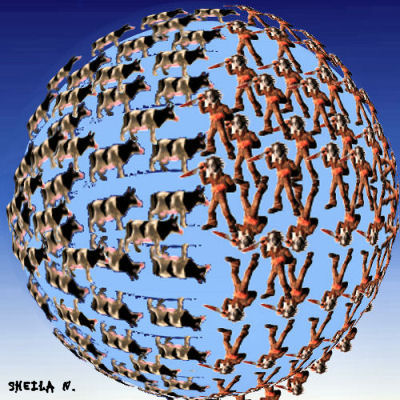
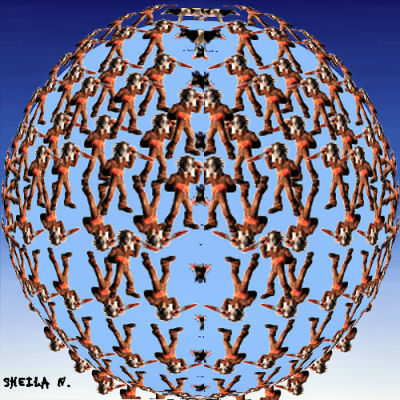
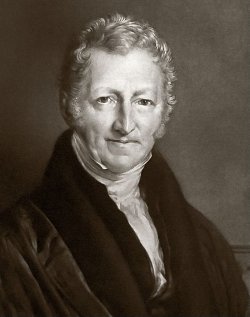
 Environmental activism can be all consuming and exhausting. Is it worth making the effort?
Environmental activism can be all consuming and exhausting. Is it worth making the effort?
Recent comments